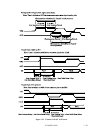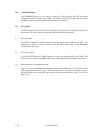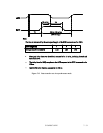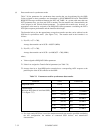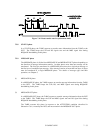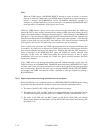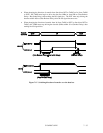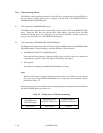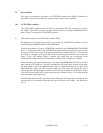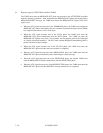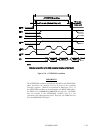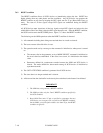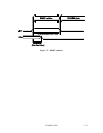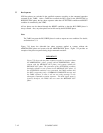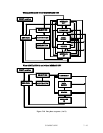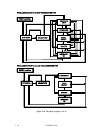C156-E097-01EN 7 - 37
7.6 Bus Conditions
Two types of asynchronous operations, an ATTENTION condition and a RESET condition, are
provided to control and modify the bus phase transition sequence (bus condition).
7.6.1 ATTENTION condition
The ATTENTION condition allows an INIT to report that the INIT has messages to be sent to
the TARG. The TARG receives a message from the INIT by executing the MESSAGE OUT
phase. Figure 7.16 shows the ATTENTION condition.
(1) Generation and release of ATTENTION condition (INIT)
By making the ATN signal true, the INIT can generate the ATTENTION condition any time
except during the ARBITRATION or BUS FREE phase.
Consider the generation of a new ATTENTION condition in the INFORMATION TRANSFER
phase. To inform the TARG of the ATTENTION condition before the transition to the next new
bus phase, the INIT must set the ATN signal true before 90 ns (Deskew Delay × 2) or more from
the timing of setting the ACK signal false for the last byte being transferred in the current bus
phase. If the ATN sending timing is delayed, the TARG may not be informed of the
ATTENTION condition until the next bus phase. The INIT may not operate as it should.
When transferring message information in several bytes in the MESSAGE OUT phase, the INIT
must keep the ATN signal true. The INIT can make the ATN signal false any time except while
the ACK signal is true in the MESSAGE OUT phase. When transferring the last byte in the
MESSAGE OUT phase, the INIT generally makes the ATN signal false during the period
between the time the REQ signal becomes true and the time it returns the ACK signal. In this
case, the INIT must set the ATN signal false before 90 ns (Deskew Delay × 2) or more from the
time of setting the ACK signal true.
The INIT must make the ATN signal false before making the ACK signal true to transfer the last
message byte if so specified for the particular type of message to the TARG. (See Subsection
2.1.2.)



